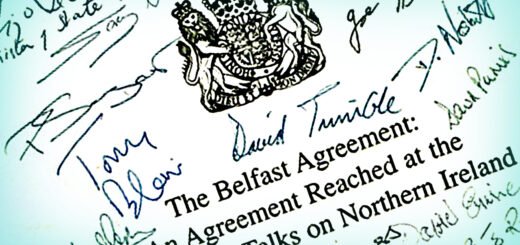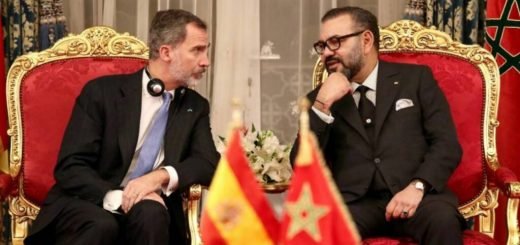Life of a Spanish Dictator: Francisco Franco
We have heard and listened to the tales and stories of dictators. Their rise and fall, their accomplishments, their failures and lots of other things but in some part of the future, the memories of these dictators vanished from the minds of people and from the memoirs of history. Then there are some dictators who left a deep mark on the pages of a history, which is difficult to vanish. They remain alive in both memories & memoirs. One such of the dictator or leader or ruler was former Spanish dictator Francisco Franco, popularly called El Caudillo or El Generalísimo, who ruled Spain from 1936 until his death in 1975.

Spanish Dictator Francisco Franco meeting Adolf Hitler
Franco was the army general who headed the famous failed 1936 coup d’état against the Second Republican Government of Spain, which later resulted in the civil war which lasted till 1939. Although the coup d’état failed he managed to continue it in the form of civil war.
Finally, the war was won by the armies of Franco against the collation army of Democrats, communists, Republicans and Catalans. Soon after winning the war, he executed around 400,000 people and banned all the political parties in Spain. He even went further to abolish press freedom and many other irrational laws which made the Spain, a closed society.
Youths and intellects of Spain were trying hard for their liberty and amnesty and were frequently arrested for organizing any rally or meeting against the government. Women were neither allowed to travel alone without the consent of their husbands nor to own any business or establishment in their own name.
Despite all such repressions by them he was respected and adored by many. In the rural Spain, he was respected more because there was a peace. After the cruel civil war, people do not have to see any more killings.
Although under his leadership, Spain was isolated from the world. Its development was derailed. From being at a similar level of development to the rest of Europe before Franco, after Franco Spain was a backwards and poor country, people faced the crisis of unemployment and the money was worthless.
As the dictatorship ended it took a lot of chaos for Spain to develop and discover what it was. The popularity of Franco can be judged when his dead body was exhibited to the common people in his palace and lots of people have flocked in front of his palace just to see him for the one last time. To show him respect, many big private offices or let’s say the entire Spain shut down. If it was open, it was forcefully closed by right-wing supporters and throughout the streets of Madrid, Arriba España (Hail Spain) and Arriba Franco (Hail Franco) was echoing.
A Grand Funeral
After his death, everyone had the same question, “After Franco, who will rule Spain?” Although Juan Carlos I had already been made the successor of Franco back in 1969, still people were in delusion about the future leadership of Spain. Right after the death of Franco, there was a chaotic situation in the country.
The hands of democrats, republicans and communists were free now. There was demand for democracy, people were going for the strike. Lots of business were under the risk of collapse. But with the resignation of then-Spanish Premier Arias Navarro and appointment of Adolfo Suarez, the political transition period of Spain started which started the democratization process. The election took place in 1977 which was banned during the Civil War.
After the death of Franco, the country was moving steadily towards the democratic government. In 1977, most of the political prisoners were released from the jail. Do people were forgetting Franco? Was Franco becoming a part of history? Do Spain still feels the legacy of Franco, even after the 42 years of his death?
In Memoirs or Memories?
Yes, Franco is the history now. Scarred by the horrors of the civil war and the post-war repression, during the transition to democracy Spaniards rejected both political violence and Franco’s idea that, by right of conquest, one half of the country could rule over the other.
However, what was impossible in a democracy was a counter-brainwashing. According to the survey in 2006 by the Spanish newspaper El Mundo, one in a three people still backs Franco. This survey was undertaken by El Mundo when Spain marked the 70th anniversary of the beginning of its bloody civil war.
The paper’s survey also found that 50% of those who vote for the conservative Popular Party-backed Franco’s uprising “against the chaos and violence of the Republic”. Practising Catholics were also more likely to support Franco. “One should not forget that the Second Republic fought the Church and the Jesuits were broken up,” the paper adds. In his last years of his regime, he didn’t rule by repression but with the popular support. There were those who, for reasons of wealth, religious belief or ideological commitment, actively sympathised with his military rebels during the civil war. Then there were those whose standard of living rises during the 1950s.
In the many national, regional and municipal elections that have been held in Spain since 1977, openly Francoist parties have never gained more than 2% of the vote, a residual acceptance of the values of the Franco dictatorship can be found in the ruling conservative Popular Party and its electorate. Accordingly, none of the government has ever branded Franco’s regime as an illegitimate government until in 2007, the Law of Historical Memory was passed which made tentative efforts to recognise the sufferings of the victims of Francoism and in 2008, Judge Baltasar Garzon investigates the disappearance of tens of thousands of people during Franco era.
Today, along with the still open wounds of the civil war and repression, two shadows of dictatorship hang over Spain- regional division and corruption. El Generalísimo’s rigid centralism and its application to Basque Country and Catalonia left more nationalist movements than there were before 1936 and 1978’s Democratic constitution gave the autonomous rights to these regions, which now in Catalonia is adding more fire to the campaign for a separate country. The other is the corruption that is pervasive in nature at all levels of Spanish politics.
Nevertheless, to say, El Generalísimo used the corruption both to reward and control his collaborators. Recent research has uncovered proof of how he used his power to enrich himself and his family. In general, the idea that public service exists for private benefit is one of the principal legacies of his regime.
It will thus be many years before Spain is free of Franco’s legacy.

This story is narrated by Abhinav Kaushal is a scholar from Instituto Cervantes – New Delhi and a frequent columnist on Spanish Culture and heritage
The views and opinions expressed in this article are those of the author and do not necessarily reflect the views of The Kootneeti Team.


















